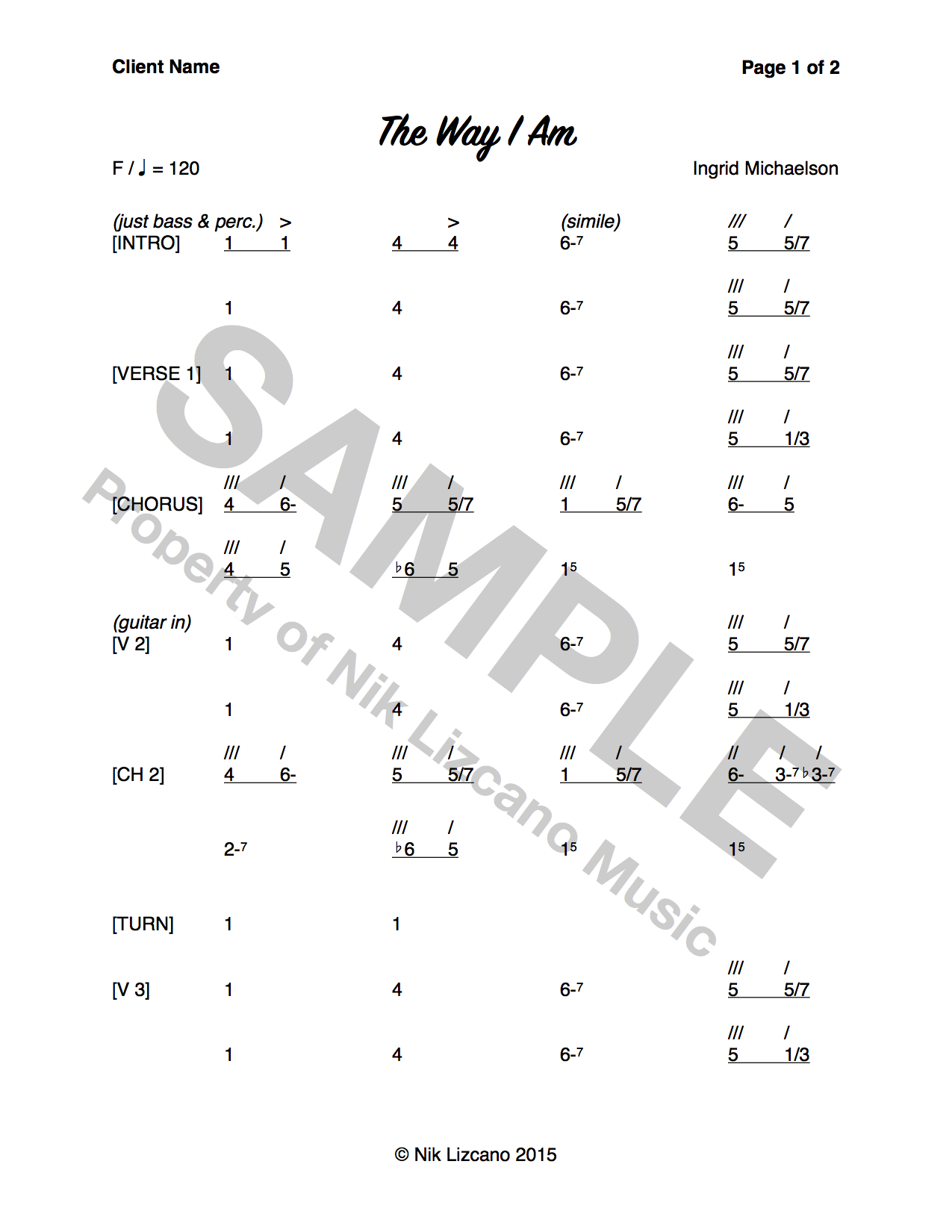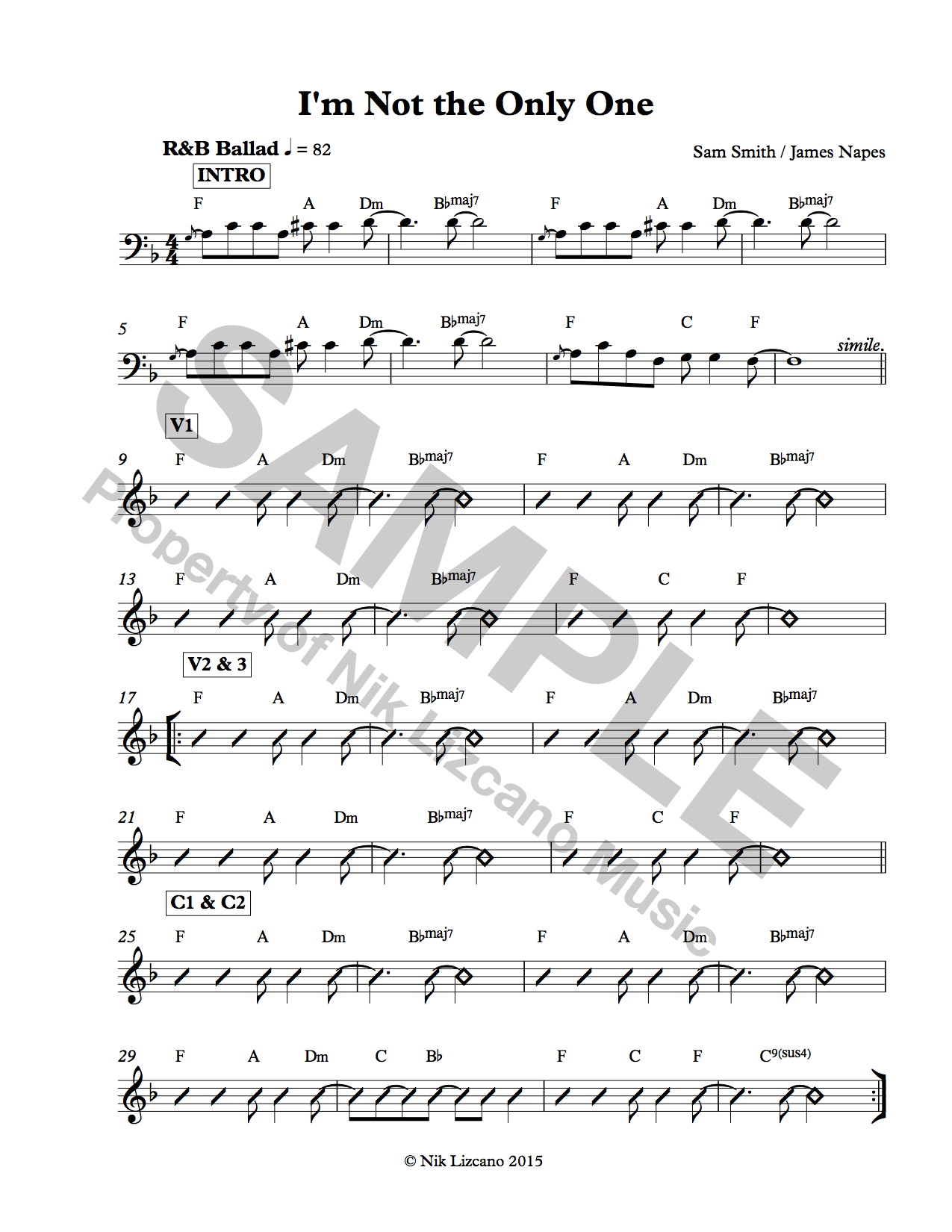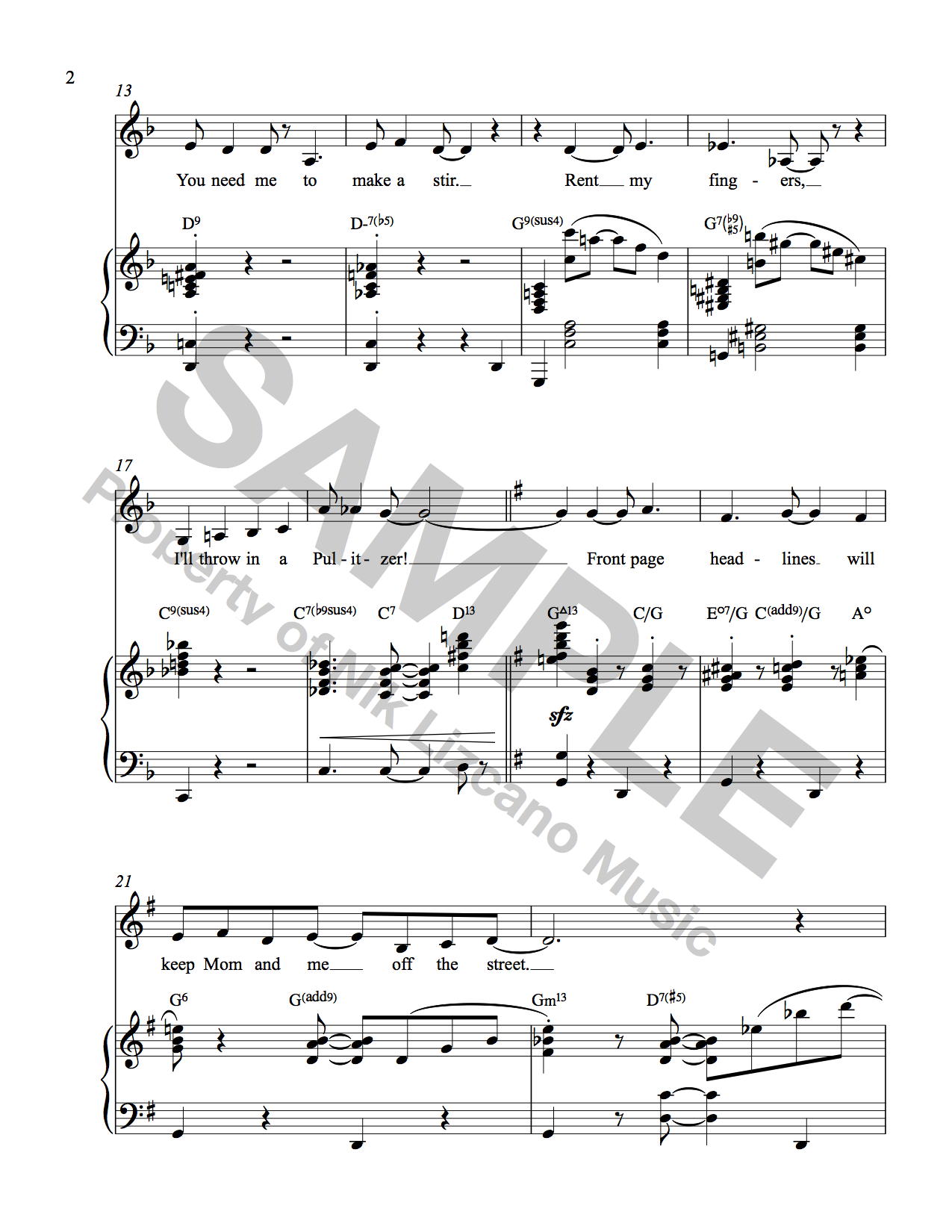
Number Chart
This style of chart originated with Nashville’s session musicians, who invented the “Nashville Number System” to quickly jot down a song’s structure after just a few listens. The chords are written out as numbers, to allow musicians to quickly transpose if needed. There also is no key signature, measure lines, bar lines or music notes. This style chart is best for songs that stay in one key and have a relatively repetitive song form.
Rhythm Chart
This style of chart is best for songs with a rhythmic and/or harmonic structure that exceeds what could be easily read or written as a Number Chart. This is the simplest chart that clearly shows key signature, measure lines, bar lines, and any necessary music notes and dynamic markings.
Lead Sheet
This style chart is what can be found in Fake Books and is used most typically by jazz musicians performing standards. They include the melody line, basic chords and sometimes lyrics, making it easy for sight-reading musicians to learn and improvise over a song with minimal difficulty. If you’re looking to publish written music for an original song that’s within any genres other than classical or musical theater, this is the chart you’ll want to submit!
Sheet Music
(Full Transcription)
While this style chart is not always the easiest to read as it is the most detailed. A full transcription is ideal for when you want your musicians to play the song exactly the way it sounds in the recording. You can also ask that I only transcribe certain instruments.











